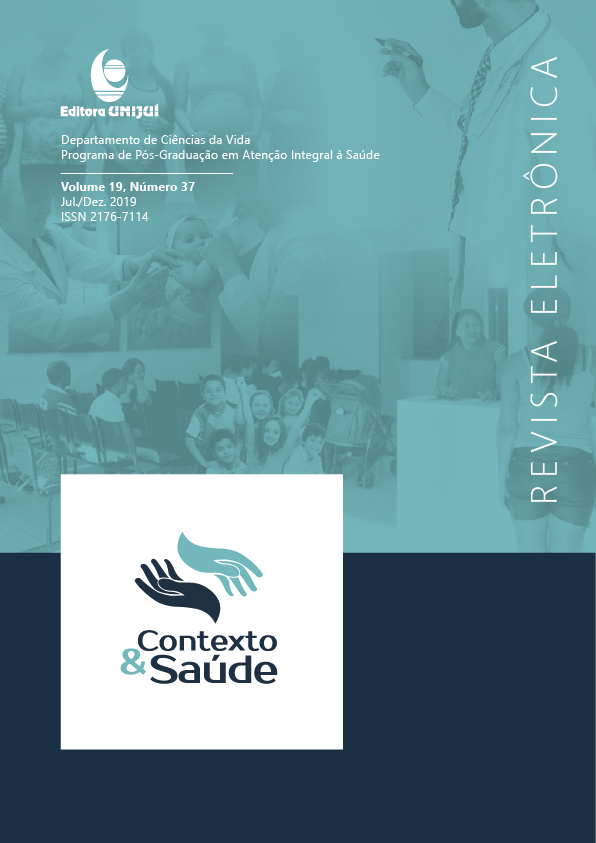GESTIONAL WEIGHT GAIN AND FACTORS ASSOCIATED WITH PREGNANT AND NEWBORNS
DOI:
https://doi.org/10.21527/2176-7114.2019.37.20-29Resumen
Objective: The present study aimed to measure gestational weight gain (GWG) and to identify the associated factors in pregnant and newborns. Methods: This is an observational cross-sectional epidemiological study in a cohort of pregnant and newborn users of Basic Care in Caxias do Sul / RS. The data were collected in three different moments, being in the first and third gestational trimester and in the first month after the baby's birth. Results: The sample consisted of 47 pregnant and newborns, of whom 28.3% had insufficient GWG, 34.8% had adequate GWG and 37% had excessive GWG. Pregnant women with schooling up to 10 years of schooling presented a higher prevalence of insufficient GWG (48.0%), while those with 11 years or more of study had a higher prevalence of adequate GWG (52.4%) (p = 0.024). Also, a significant association with length at birth (p-value 0.035) and feeding during the first week of life (p-value 0.037) was observed. Conclusions: It is concluded that pregnant women have a high prevalence of excessive GWG. Also, a significant association was identified between the poor GWG with the low level of education of the pregnant woman and the shorter length at birth. There was an association between excessive GWG and high prevalence for SMA in the first week of life. Thus, the need for strategies to adjust and guide GWG, as well as to instruct healthy life habits and to reinforce the need of prenatal care for the health of the pregnant woman and the newborn, is perceived.
Descargas
Publicado
Cómo citar
Número
Sección
Licencia
Ao publicar na Revista Contexto & Saúde, os autores concordam com os seguintes termos:
Os trabalhos seguem a licença Creative Commons Atribuição 4.0 Internacional (CC BY 4.0), que permite:
Compartilhar — copiar e redistribuir o material em qualquer meio ou formato;
Adaptar — remixar, transformar e criar a partir do material para qualquer fim, inclusive comercial.
Essas permissões são irrevogáveis, desde que respeitados os seguintes termos:
Atribuição — os autores devem ser devidamente creditados, com link para a licença e indicação de eventuais alterações realizadas.
Sem restrições adicionais — não podem ser aplicadas condições legais ou tecnológicas que restrinjam o uso permitido pela licença.
Avisos:
A licença não se aplica a elementos em domínio público ou cobertos por exceções legais.
A licença não garante todos os direitos necessários para usos específicos (ex.: direitos de imagem, privacidade ou morais).
A revista não se responsabiliza pelas opiniões expressas nos artigos, que são de exclusiva responsabilidade dos autores. O Editor, com o apoio do Comitê Editorial, reserva-se o direito de sugerir ou solicitar modificações quando necessário.
Somente serão aceitos artigos científicos originais, com resultados de pesquisas de interesse que não tenham sido publicados nem submetidos simultaneamente a outro periódico com o mesmo objetivo.
A menção a marcas comerciais ou produtos específicos destina-se apenas à identificação, sem qualquer vínculo promocional por parte dos autores ou da revista.
Contrato de Licença (para artigos publicados a partir de setembro/2025): Os autores mantém os direitos autorais sobre seu artigo, e concedem à Revista Contexto & Saúde o direito de primeira publicação.

